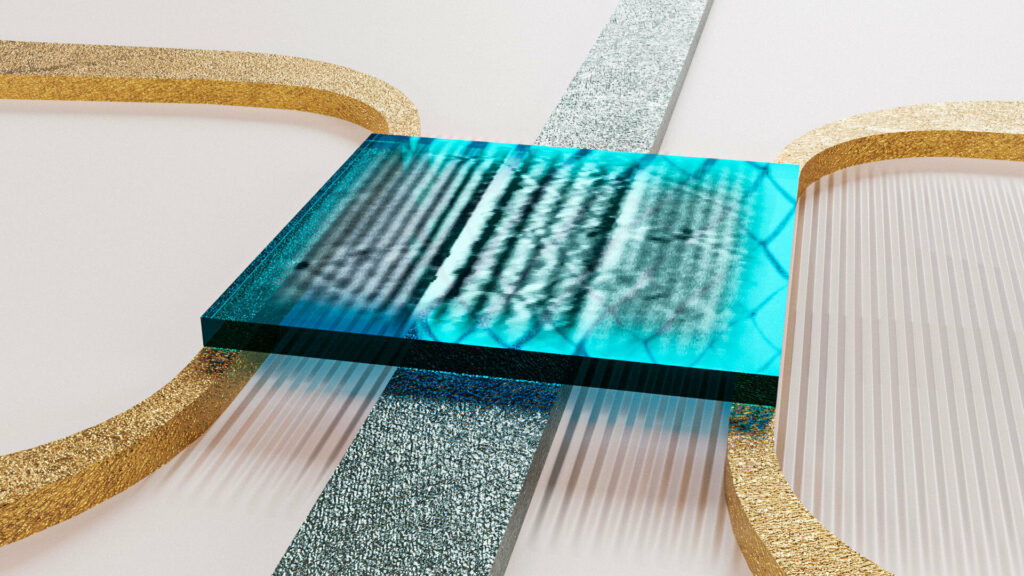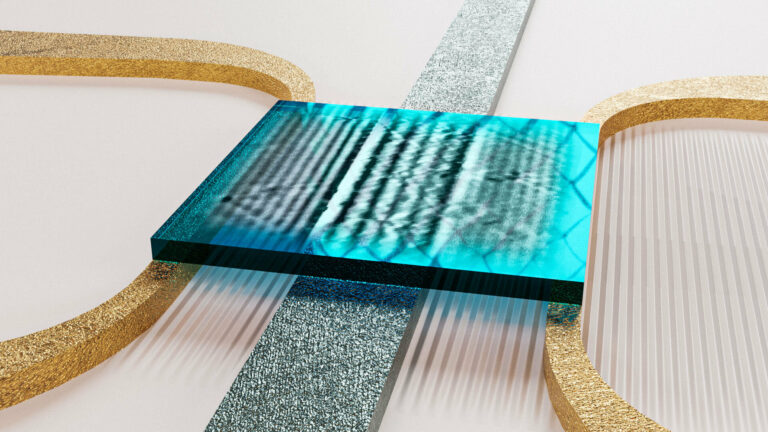“First-Ever Manipulation of Magnet Waves Using Superconductors”
Quantum physicists at Delft University of Technology have achieved a groundbreaking feat by demonstrating the ability to control and manipulate spin waves on a chip using superconductors for the first time. These minuscule waves within magnets may present a potential alternative to conventional electronics in the future. Published in Science, the study primarily provides physicists with new insights into the dynamic interaction between magnets and superconductors. Michael Borst, who spearheaded the experiment, elucidates,
“Spin waves are oscillations in a magnetic material that can serve as a means to transmit information. Given their potential as a promising foundation for an energy-efficient replacement for electronics, scientists have long sought an effective method to control and manipulate spin waves.” While theoretical predictions suggested that metal electrodes could exert control over spin waves, experimental evidence supporting this notion was scarce until now. Toeno van der Sar, Associate Professor in the Department of Quantum Nanoscience, highlights the breakthrough, stating, “Our research team’s achievement lies in demonstrating that effective control of spin waves is indeed possible through the use of a superconducting electrode.”
The mechanism operates as follows: a spin wave generates a magnetic field, inducing a supercurrent in the superconductor. This supercurrent functions as a mirror for the spin wave, reflecting the magnetic field back onto the spin wave. The superconducting electrode serves as a mirror, causing the spin waves to move more gradually, rendering them easily controllable. Borst adds, “As spin waves traverse beneath the superconducting electrode, their wavelength undergoes a complete transformation. By slightly adjusting the temperature of the electrode, we can finely tune the magnitude of this change.”

“We initiated the process with a thin magnetic layer of yttrium iron garnet (YIG), renowned as the Earth’s premier magnet. Atop this layer, we positioned a superconducting electrode and an additional electrode to induce spin waves. By cooling to -268 degrees, we transitioned the electrode into a superconducting state,” Van der Sar explains. “The fascinating observation was the gradual slowing of spin waves with decreasing temperature. This provides us with a distinctive means to manipulate spin waves, enabling actions such as deflection, reflection, resonance, and more. Additionally, it imparts significant new insights into the characteristics of superconductors.”
To visualize the spin waves, the researchers utilized a unique sensor to measure their magnetic field—an integral aspect of the experiment. Van der Sar elaborates, “We employed electrons in diamond as sensors for detecting the magnetic fields associated with the spin waves. This technique, pioneered in our lab, allows us to peer through the opaque superconductor at the spin waves beneath, akin to how an MRI scanner penetrates the skin to observe the internal body.”
“Spin wave technology is still in its early stages,” Borst remarks. “To achieve energy-efficient computers using this technology, we need to commence the construction of small circuits for performing calculations. Our discovery unlocks a pathway: superconducting electrodes enable the creation of numerous new and energy-efficient spin-wave circuits.” Van der Sar adds, “We can now conceptualize devices based on spin waves and superconductors that generate minimal heat and sound waves. Consider the spintronics equivalent of frequency filters or resonators, akin to components found in electronic circuits of cell phones. Alternatively, circuits could serve as transistors or connectors between qubits in a quantum computer.”
This article is republished from PhysORG under a Creative Commons license. Read the original article.
Do not forget to share your opinion with us to provide you with the best posts !





0 Comments